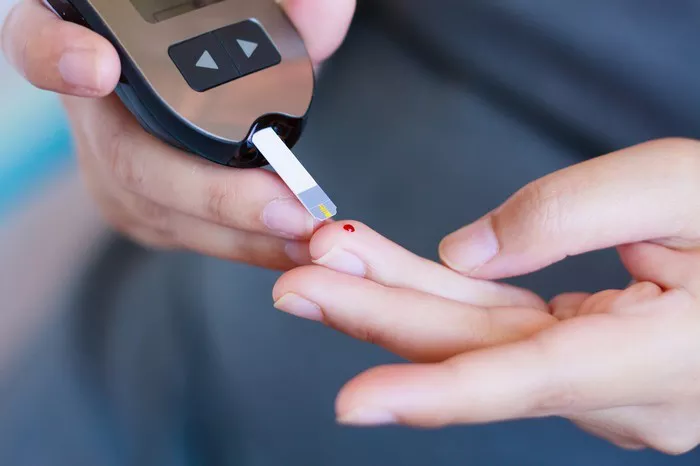The glucose tolerance test (GTT) is a critical screening tool used during pregnancy to identify gestational diabetes mellitus (GDM). Gestational diabetes is a condition where the body struggles to manage blood sugar levels during pregnancy, posing risks to both the mother and the baby. Preparing for this test is essential to ensure accurate results, as various factors can influence blood glucose levels. This article will delve into what expecting mothers should do before a glucose tolerance test, providing a comprehensive guide to help them navigate this crucial aspect of prenatal care.
Understanding the Glucose Tolerance Test
The glucose tolerance test is typically conducted between the 24th and 28th weeks of pregnancy. It involves measuring the body’s response to glucose, a type of sugar. The test is usually done in two steps:
Glucose Challenge Test (GCT): This is the preliminary test where the mother drinks a sugary solution, and her blood sugar is tested after one hour. If the blood sugar levels are higher than normal, a second test, the Oral Glucose Tolerance Test (OGTT), is administered.
Oral Glucose Tolerance Test (OGTT): This test is more detailed and involves fasting overnight before drinking a more concentrated glucose solution. Blood sugar levels are then tested at intervals of one, two, and three hours to see how the body processes the sugar over time.
Why is the GTT important?
The GTT helps identify gestational diabetes, which, if left untreated, can lead to complications such as preeclampsia, premature birth, and high birth weight, increasing the likelihood of a cesarean section. Additionally, gestational diabetes increases the risk of the mother developing type 2 diabetes later in life.
What to Do Before the Glucose Tolerance Test
Understand the Test Requirements
Before the test, it’s crucial to understand the specific requirements provided by your healthcare provider. Generally, the GCT does not require fasting, but the OGTT does. Fasting typically involves abstaining from food and beverages (except water) for 8-14 hours before the test. Some healthcare providers may have additional guidelines, so it’s important to clarify any doubts beforehand.
Maintain a Balanced Diet
In the days leading up to the test, maintain a balanced diet rich in complex carbohydrates, proteins, and healthy fats. This helps stabilize blood sugar levels and ensures that your body is functioning optimally. Avoid drastically changing your diet just before the test, as this could affect the results. Instead, focus on eating a variety of nutrient-dense foods, including whole grains, lean proteins, fruits, vegetables, and healthy fats.
Avoid Sugary Foods and Drinks
In the days leading up to the GTT, it’s advisable to limit the intake of sugary foods and beverages. Excessive sugar consumption can lead to elevated blood glucose levels, which might skew the test results. While it’s important to maintain your usual diet, being mindful of sugar intake can help ensure more accurate test results.
Stay Hydrated
Proper hydration is essential before any medical test, and the GTT is no exception. Drinking plenty of water before the test can help with blood circulation and the accuracy of blood tests. However, avoid other beverages like coffee, tea, or juice, especially during the fasting period before the OGTT.
Get Adequate Sleep
A good night’s sleep before the test is crucial. Lack of sleep can affect your body’s ability to regulate blood sugar levels, potentially impacting the test results. Aim for at least 7-9 hours of sleep the night before the test to ensure your body is well-rested and functioning optimally.
Plan for the Test Day
The GTT, particularly the OGTT, can be time-consuming, as it involves multiple blood draws over several hours. Plan your day accordingly, bringing along activities like books, magazines, or a tablet to keep you occupied. Also, consider arranging for someone to accompany you if you think you might feel lightheaded or fatigued after the test.
Inform Your Healthcare Provider About Medications
If you’re taking any medications, inform your healthcare provider before the test. Some medications can affect blood sugar levels, potentially impacting the test results. Your doctor may advise you to adjust your medication schedule or take special precautions before the test.
Manage Stress Levels
Stress can have a significant impact on blood glucose levels. High stress can trigger the release of stress hormones like cortisol, which can raise blood sugar levels. Practice stress-reducing techniques like deep breathing, meditation, or gentle exercise in the days leading up to the test to help keep your stress levels in check.
Understand the Possible Side Effects
The glucose solution consumed during the GTT is very sweet and may cause nausea or lightheadedness, particularly for those who are sensitive to high sugar intake. Knowing this in advance can help you mentally prepare for the test. If you have concerns about these side effects, discuss them with your healthcare provider beforehand.
Know What to Expect After the Test
After the GTT, especially the OGTT, some women may experience fatigue or nausea due to the fasting and the glucose intake. Plan for a light meal after the test to help stabilize your blood sugar levels and restore your energy. It’s also advisable to avoid strenuous activities immediately after the test, as your body may still be recovering from the effects of the glucose solution.
Interpreting the Results
Understanding the results of the GTT is crucial for determining the next steps in your pregnancy care. Blood sugar levels are measured in milligrams per deciliter (mg/dL), and the following are general guidelines for interpreting the results:
For the GCT: A blood sugar level below 140 mg/dL is usually considered normal. If it’s higher than this, your doctor may recommend the OGTT for further evaluation.
For the OGTT: Blood sugar levels are measured at fasting, 1 hour, 2 hours, and sometimes 3 hours after drinking the glucose solution. The following are typical thresholds for gestational diabetes:
- Fasting: 95 mg/dL or higher
- 1 hour: 180 mg/dL or higher
- 2 hours: 155 mg/dL or higher
- 3 hours: 140 mg/dL or higher
If two or more of your blood sugar readings are higher than these thresholds, you may be diagnosed with gestational diabetes. Your healthcare provider will discuss the results with you and outline a management plan, which may include dietary changes, regular exercise, and possibly medication or insulin therapy.
Coping with a Gestational Diabetes Diagnosis
Being diagnosed with gestational diabetes can be overwhelming, but it’s important to remember that it’s a manageable condition. With the right care and lifestyle adjustments, most women with gestational diabetes go on to have healthy pregnancies and babies. Here are some steps to take if you’re diagnosed:
Work Closely with Your Healthcare Team
Your healthcare provider will likely refer you to a specialist, such as a dietitian or endocrinologist, who can help you manage your condition. Regular monitoring of blood sugar levels will be necessary, and you’ll need to attend frequent prenatal visits to ensure that both you and your baby are doing well.
Adopt a Gestational Diabetes-Friendly Diet
A key component of managing gestational diabetes is following a diet that helps keep your blood sugar levels stable. This typically involves eating smaller, more frequent meals, focusing on complex carbohydrates, and pairing carbs with protein and healthy fats to slow the absorption of sugar into the bloodstream. Your dietitian can provide personalized recommendations based on your needs and preferences.
Incorporate Regular Physical Activity
Exercise is another important aspect of managing gestational diabetes. Physical activity helps improve insulin sensitivity, allowing your body to use glucose more effectively. Activities like walking, swimming, or prenatal yoga are generally safe and beneficial during pregnancy, but always consult with your healthcare provider before starting any new exercise regimen.
Monitor Your Blood Sugar Levels
You will likely need to monitor your blood sugar levels at home using a glucose meter. This involves pricking your finger to obtain a small drop of blood, which is then analyzed by the meter. Keeping a log of your blood sugar readings will help your healthcare team adjust your treatment plan as needed.
Prepare for Delivery
Gestational diabetes can increase the risk of complications during delivery, such as the baby being larger than average (macrosomia), which can make a vaginal birth more challenging. Your healthcare provider will discuss your delivery options with you and may recommend an early induction or cesarean section if necessary.
Plan for Postpartum Care
After your baby is born, your blood sugar levels will likely return to normal, but it’s important to continue monitoring them. Women with gestational diabetes are at higher risk of developing type 2 diabetes later in life, so adopting a healthy lifestyle postpartum is crucial. Your healthcare provider may recommend a glucose tolerance test 6-12 weeks after delivery to ensure that your blood sugar levels have returned to normal.
See also: What Percentage of Women with Gestational Diabetes Develop Diabetes?
Conclusion
The glucose tolerance test is a vital part of prenatal care, helping to identify gestational diabetes and ensuring the health of both mother and baby. Preparing for the test by following the guidelines outlined in this article can help ensure accurate results and a smoother testing experience. If diagnosed with gestational diabetes, remember that it’s a manageable condition with the right care and lifestyle adjustments. Working closely with your healthcare team will help you navigate this challenging time and ensure a healthy outcome for you and your baby.
Related topics:
What Should Your Sugar Be When Pregnant?

























